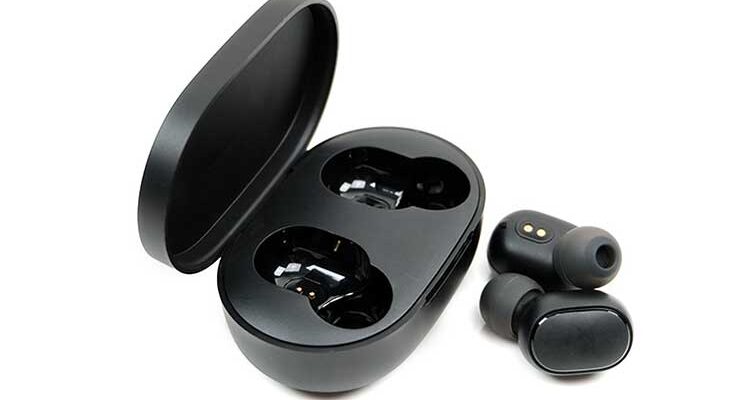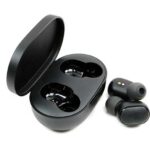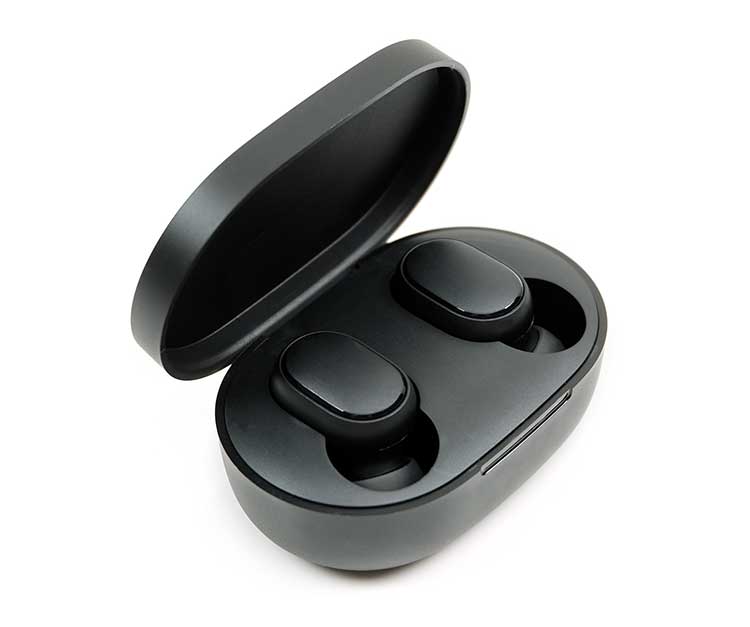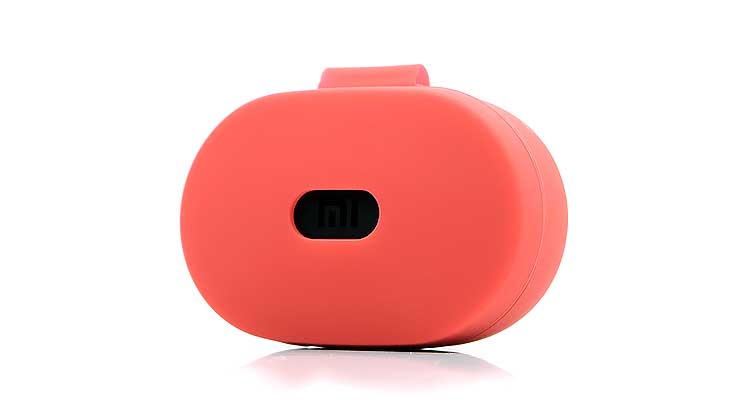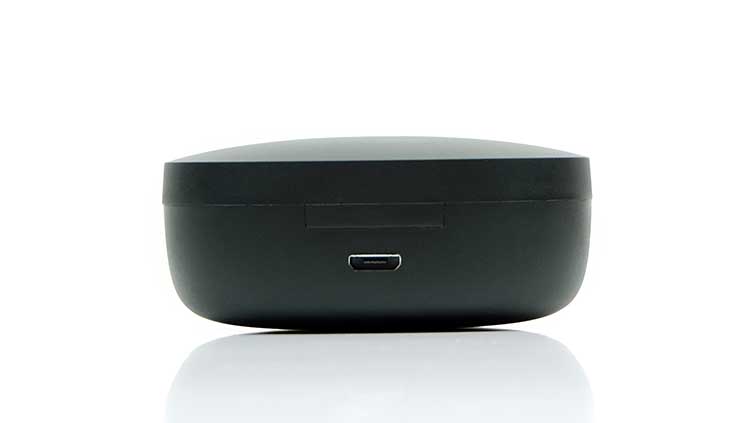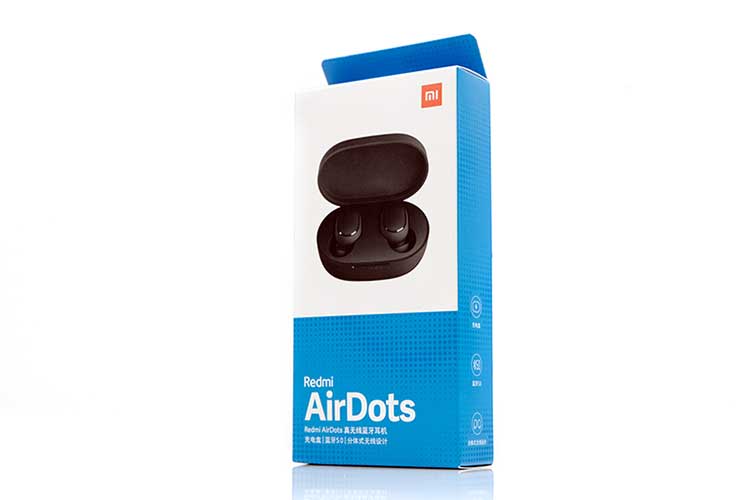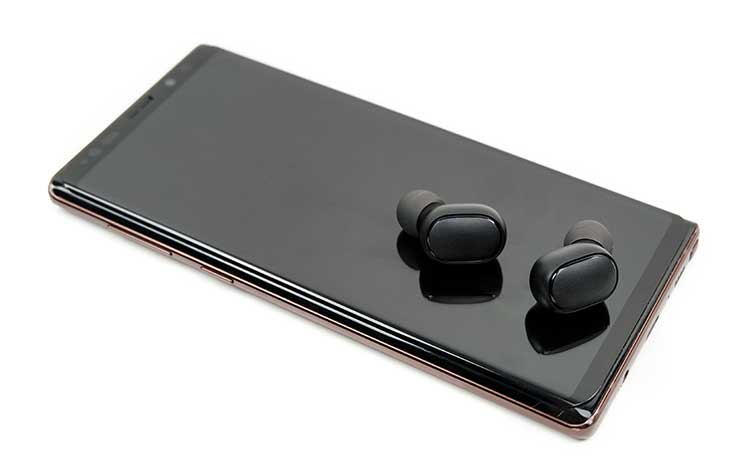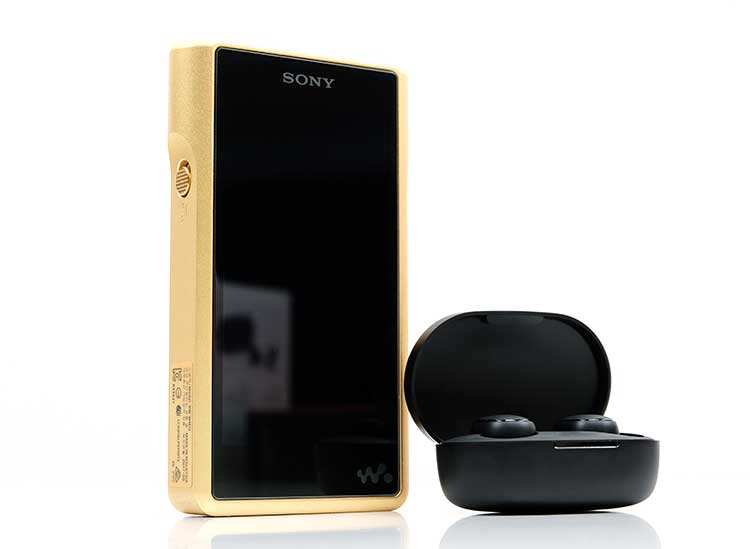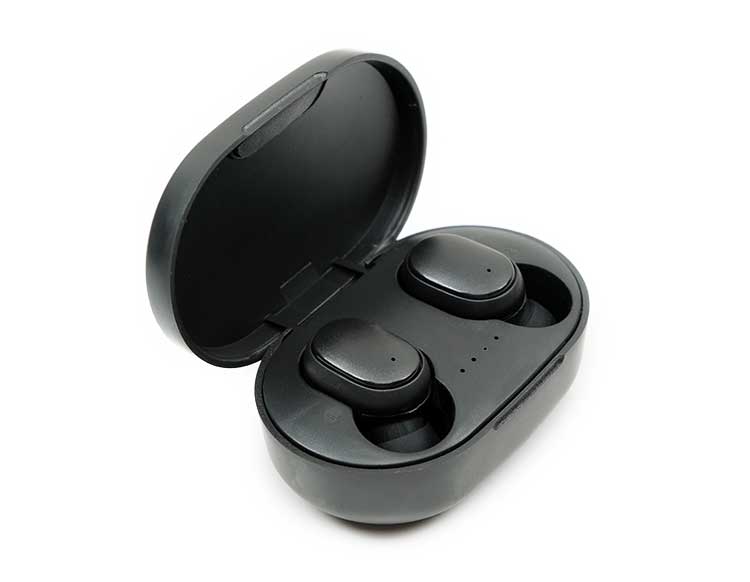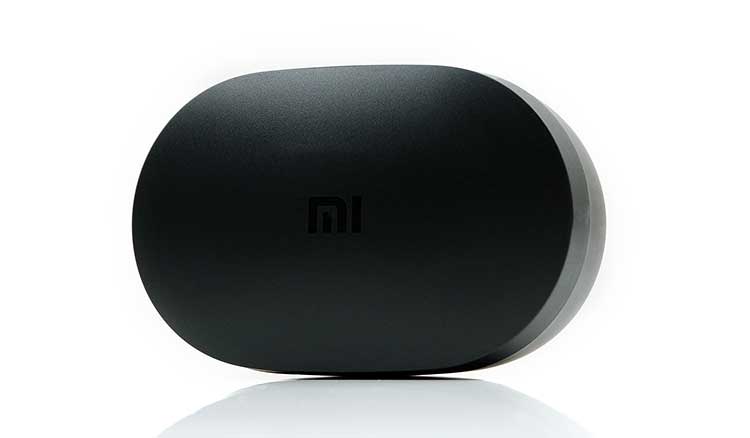Our review of the Xiaomi Redmi Airdots, which is a TWS featuring a single 7.2mm dynamic driver, Bluetooth 5.0, and 4 hours of battery life. It is priced at $29.99
Disclaimer: This sample was sent to us in exchange for our honest opinion. Headfonics is an independent website with no affiliate links or status. We thank Linsoul for this opportunity.
To read more about our reviews of TWS products on Headfonics click here.
Note, this review follows our current scoring guidelines which you can read up on in more detail here.
The Xiaomi Redmi Airdots are pretty much a classic budget TWS at an SRP of $29.99. When I say classic they kind of fit the generic mold of what these systems offer at the budget-end.
That includes a single dynamic driver, a fairly compact size, a cradle that acts as a battery charger, and of course Bluetooth connectivity with remote control/mic features.
The Airdots were launched in early 2019 and are the company’s entry-level TWS option. These are not the only TWS from Xiaomi either.
They have some Apple derivative stuff like the white Mi True Wireless TWS and their Air 2 which retails for around $50 to $100 and more on the high-end for a TWS system.
Tech Inside
Driver
The Airdots use a non-descript 7.2mm dynamic driver and not much else is known so assume a fairly basic delivery system, aka a single tube and nothing fancy like beryllium diaphragms.
SPL and impedance are not so much a factor as far as I know for TWS earbuds and Redmi has not included any data regarding driver specs.
However, we do know that there is an alternative from Haylou called the GT1 that seems to be an OEM rebrand of the Airdots with a similar driver size. These are rated at 32Ω and 110dB so we will guess the Airdots are in a similar ballpark.
What I can tell you is that the default volume does vary on these devices so when you hook them up do check your volume is low on your transmitting source before you start listening to them.
Bluetooth
Pleasingly, the Airdots use a Bluetooth 5.0 capable Qualcomm chipset which I was not expecting for the price point. More expensive units we have in the office here tap out at BT4.2 such as Huawei’s FreeBuds TWS Wireless which are more than twice the price. I am hoping the performance from the Airdots is fairly stable as a result.
Bluetooth protocols supported include AD2P, AVRCP, HFPA, and HSP. Whilst it offers SBC there is no ACC or aptX though which is a shame but then it is $29.99.
Some higher-priced models will give you aptX such as Sennheiser’s Momentum TWS and HELM’s TW5.0 but you will pay more for that.
Independent Buds
Like a lot of TWS earbuds, the Airdots left and right buds can be used independently of each other should you want to do that. The default side to use in Mono mode is the right side.
‘Mono” use will increase the battery life of the Airdots but it will also mean uneven battery life in both channels which is a huge peeve of mine already. Stereo use with a left-right BT connection is much preferred to keep battery life in both channels even and also it just sounds a whole lot better, period.
DSP Noise Reduction
Now, this is interesting to me, well anything isolation-related should be for these types of earbuds. Redmi calls this DSP intelligent environment noise reduction technology. It is not clear to me how exactly this works unless they use the internal microphone to filter external sound like an ANC or tweak the background noise floor.
IPX4 Water Resistance
For sweaty ears and gym-goers, this is a nice bonus to have at this price point. Waterproofing is not a given in TWS systems by default. Quite a few high-end ones have none at all such as Sony’s WF-1000XM3 at over $200. In theory, these should be safe from a few specks of water or light rainfall.
What it does not have?
Well, a few things but I give them a free pass for now given the price point. The first is a lack of multi-point connectivity for Bluetooth so it is just one device connected at a time. There is no active noise cancellation or ANC either.
Technically, there is no dedicated app integration such as Sennheiser’s smart control but you can adapt Dotdroid on Android to partially work with them using a profile called Airdots Youth.
Design
Form Factor
Monitors we review day and daily are fairly small and the Airdot drivers themselves are only a little larger than a typical jellybean Westone driver. However, you can’t view a TWS as the driver alone. The big selling point is their carry case which duals as a charger/dedicated power bank.
Some of the flip lid charging cases are relatively large like the Hifiman TWS600 and HELM’s TW5.0 cases. The Redmi Airdots, however, are just the opposite. They are friggin’ tiny and completely pocketable. I have to compliment Redmi on keeping the form factor so small.
The drawback is the generic shape can confuse you as to which side is which. Labeling is for 20:20 vision only under a strong light so it is quite easy to put them in the wrong way around initially.
Materials & Finishing
Both the monitors and the charging case, however, are made of plastic. Not the premium kind either. I have seen cheaper though in the OEM $8 A6S clone which you can read more about below. You only get these in matte black which helps disguise the material’s cheapness.
They are also quite light and the finishing is pretty clean in terms of lines with no loose plastic bits. Xiaomi always has had a knack for producing really clean designs on its products and the Airdots are no different. I just wouldn’t put too much stress on the charger hinge though as it could break.
The other issue I had with the case was the magnet strength concerning getting them out. They are fiddly due to the angle of the lid and how close they are to the hinge. You simply can’t push them out, you have to semi-grip them and tease them out due to the magnet strength.
For additional protection, I would suggest going online and grabbing a small custom silicone protective case for the Airdots. They make a big difference in the handling and cost something like $4 which is nothing.
I grabbed one in red just to make it stand out a bit more. They are pretty soft and cover 99% of the case with just a small opening for the charging USB port and the MI branding logo on top.
Controls
Physical or Touch?
As with all TWS, controls are onboard and usually via touch or click button systems buried inside the faceplate or minute buttons on the side. The Airdots use a physical click-button system on the faceplates.
They are discreet and you honestly would not know the faceplate is a button until you press them down.
I am not a fan of the physical button thus far. I think I am going to prefer touch controls on TWS. With the Airdots pressing in messes with the positioning of the drivers in my ear and the inward pressure is not ideal either.
Touch does a much better job of avoiding that. On the flip side, you will not accidentally hit the controls with a physical button system.
Features
Controls start with pairing and the right side. The left side will automatically pair with the right once you connect to your BT source. Pairing with your source is not rocket science. You simply take them out of the charger and it will begin pairing mode automatically or connect with a previously paired device, if within range.
Beyond that you have controls for playback, call taking, and a voice activation service for both Siri and Google Assistant. You do not have volume control abilities from the buds though which is a drawback and a useful feature on other competing TWS. Latency is relatively low despite not having aptX LL
Battery Life & Charging
The Airdots have a 40mAh battery inside the main drivers and can run on a full charge for around 4 hours. I do recommend installing the Dotdroid app on Google Play even if not totally compatible.
It will show battery life in percentage and minutes left as well as time to charge to 100% which I find very useful. The case will give a further 12 hours so you get about 3-4 charges out of it.
How good is the 4-hour battery life? I would say slightly below average judging by the claimed rates on sub-$100 TWS units. The HELM TW5.0 and Sony’s Sony WF-1000XM3 are rated at 6 hours and 1MORE’s stylish is 6.5.
RHA’s Trueconnect is a little closer at 5 hours, however, its charging case can carry a much bigger charge at 20 hours compared to the Airdot’s smaller 12-hour capacity. The1MORE Stylish is even more impressive at 24-hour capacity. Given the tiny size of the Airdots case, 12 hours is not surprising.
Micro USB
Probably the more disappointing aspect is the inclusion of Micro USB for charging. Now, quite a lot of these TWS systems do use old charging technology so Redmi is not the only culprit.
It does mean it lacks quick charging features from USB-C equipped alternatives such as the 1MORE Stylish which comes in at 1 hour. Charging for the Airdots is kind of long at 1.5 hours official for me.
Comfort & Isolation
The Airdots are on the smaller side but have a fairly universal form factor and are not as contoured as something like the Mifo or KZ new styles which are more contoured like a traditional monitor.
Their small size does have the advantage of being able to sit deep into the canal due to its very long nozzle so tips can do their magic.
This is just as well because the tip selection is a bit crappy with just a small set of single-bore silicone tips in S/M/L. Most TWS I have tried sub $100 have very few tips to speak of so this is not something unusual. I got a great fit with the large silicone tips and I suspect that DSP is doing something because the seal is very good indeed.
The comfort level is also very good and they do feel relatively secure in my ear. No, they did not fall out either on the exercise bike so mission accomplished.
Accessories & Packaging
A super basic package and accessory lineup. I guess that is fair for sub $30 though I am just not used to it. The packaging is more socks than earphones and fairly cardboard and quite boring looking. Entirely disposable.
Inside you get the case, earbuds, a short micro-USB charging cable, a manual, and a bag of tips. That is all she wrote folks.
An addendum is good 3rd party support for the Airdots and at a fairly cheap price also. That includes those protective silicone cases and there are also plenty of USB cables and tips that will fit the Airdots just fine. For example, Symbio hybrid tips work just fine and do a fantastic job tightening up the sound compared to the stock tips.
Sound Impressions
I was ready for rubbish, these are not rubbish but they are very much a consumer V-shaped presentation. That means a heavy emphasis on the low-end with a sub-bass dominance and a slow but steady dip down to about 1k.
You get the expected lower-mid dips and a lack of instrumental body and presence, however, vocals beyond 1k are much better sounding forward without being shouty. The Airdots have a pronounced lift from 1-3k so they will favor soulful female vocals over rock male performances.
The tuning also carries a little bit of warmth with it from the mid-bass into the timbre so it is not terribly dry sounding. It has that classic dynamic driver with long decay and slow pace about it which suits that sparse R’n’B and pop modern mixing method.
While there is some treble lift, it remains a bit more smooth for vocals and instrumental timbre. I say a bit more, there can be a bit of an edginess to vocal and note attacks that sounds a shade unnatural to me but nothing annoyingly peaky.
Staging
The staging is deep with moderate height and a narrow midrange. Most everything is front and center with average width so imaging is not going to be flying in from extreme left/right angles. Instrumental separation, as you may expect, is average but I have heard $30 wired IEMs that have sounded a lot worse.
The main saving grace is the excellent sense of depth and power from the Airdots.
Genre Preferences
Hard rock is a no-go for me on the Airdots mainly due to the lack of presence in that lower-mid range. EDM, R’n’B, and synth-wave do a lot better, well anything really that tugs on that sub-bass weight and extension which is really the strong point of the Airdots.
If you keep the midrange free of ‘business’ and complexity then they do quite well for its positioned price point. I was more impressed with the likes of the Toxic Avenger and Code Elektro which had a strong sense of PRaT and an enjoyable drive to them.
These genres have more emphasis on a contrast of lows and highs which is where the Airdots tuning is more geared towards.
Wireless Performance
Since the Airdots have no multi-point connectivity despite BT5, checking between devices is a bit of a pain. You have to disconnect from one and connect with the other in a very linear fashion.
The initial pairing with each device worked pretty well actually and was a lot less complex than some of the other TWS we have here in the office.
I had no issues pairing with both my Huawei P20 and Samsung Note 9 as well as a Lotoo PAW Gold Touch and Sony’s 1Z. All devices found the right bud and the left paired right after.
The Airdots connection workable distance was very good on all 4 of our test devices. Both the smartphones easily gave me a 10-12 meters direct line with one door and a wall between myself and the phone.
I could have possibly got more if I had not run out of apartment space. Two walls brought some cutouts. The physical button controls worked just fine at the maximum distance.
The Sony 1Z was equally as good as the two smartphones in terms of distance and stability. All 3 kept the signal stable by the way but then again it’s SBC quality only so it is not shifting a lot of data compared to aptX or LDAC.
Only the PAW Touch showed a level of instability with some cut out quite close at 1-2m which would be a concern for me if I was looking to use these two as a pair.
Comparison Ladder
A6S TWS
Around $8 or $9
Can you get cheaper than this? I bet you can and I bet it will be as equally as bad if not worse. However, for the price of a cinema ticket it is worth checking out just how low one can go.
A good way to start the TWS ladder? Probably, so long as I do not find something more cancer-inducing as this abomination. Still, I did buy it freely. I bought two so one of my in-laws is or was (time to print post-Xmas) going to be blissfully unaware this Xmas.
Why pick this one then? Well, the A6S is a classic example of just how prevalent the OEM rebrand business is in the TWS market right now.
It is, to all extents and purposes, an Airdots OEM. Yes, an even cheaper version of something that is already rather cheap. I do not even know who makes it, they conveniently left that out of all the supplied packaging. Made in China? You betcha!
Technical
It does have certain shared characteristics being an OEM. Similar packaging and accessories, same charging case form factor, look, and size.
The driver units look almost the same and both have micro USB charging. Both have Bluetooth 5.0 with around 3-4 hours battery life for the A6S buds and a claimed 18 hours or 6 charges for the charger.
However, the A6S charging case is flimsy with an even flimsier hinge for the lid. The connection points on the A6S drivers also look cruder than the finish on the Airdots. Since it is an OEM, the cheap silicone protection cases also work which is a small relief.
Performance
Stability is awful compared to the Airdots. I got constant left-right disconnects and about 2-3m less distance than the Airdots. This was using the Samsung Note 9 and the P20 smartphones which should be my best performers for stability as a source.
Call quality was fair, to be honest. I had a call from my car service agent in the middle of testing and not once did he ask me to repeat anything I said nor did I have an issue making out what they were on about.
Tuning
Just terrible really. It makes the Airdots sound like a high-end audiophile monitor, which clearly it is not.
The problem? It sounds incredibly compressed with a smaller 6mm dynamic driver inside that is utterly incapable of delivering any depth below 100Hz. Treble is edgy and hot, upper mids are steely and instruments are dry and harsh sounding. Way too much odd-harmonic overtone and not enough refinement on the A6S making it very fatiguing.
By contrast, the Airdots sound much deeper, airier, and with way better PRaT compared to this OEM. The level of resolution from the better 7mm dynamic driver is palpable.
It makes you appreciate that additional $22 cost as if it is a $500 upgrade in audiophile terms. At the low end, the laws of diminishing returns do not apply. Avoid at all costs unless you are ‘evil gifting’.
Our Verdict
Of course, I am not blown away by the sound of the Airdots but it is nowhere near as bad as I had expected when dropping down to a budget wireless TWS.
Compared to its evil dark OEM equivalent, the A6S, the Airdots are tuned much better with a driver that is clearly pandering to bassheads. But the power it does have and plenty of it and it is not as sloppy as I would have thought.
the Airdots are honestly not the worst sounding. The connection is steady, the pairing very easy, the fit is good and I am still alive and breathing. $30 is a fair price for the Airdots.
Xiaomi Redmi Airdots TWS Specifications
| Earpiece Design | In-Ear (Intra-Aural) |
| Number of Drivers | 1, per Earpiece |
| Driver Size | 0.28″ / 7.2 mm |
| Active Noise Cancellation | No |
| Controls/Microphone Location | Controls: Left Earpiece, Right Earpiece Microphone: Earpiece (Side Unspecified) |
Wireless Connectivity
| Bluetooth | 5.0 |
| Capacity (mAh) | 40 mAh |
| Runtime | 4 Hours (BT) |
| Charging Port | Pins |
Charging Case
| Additional Runtime | 11 Hours |
| Capacity | 300 mAh |
| Charging Time | 20 Minutes |
| Charging Interface | Micro-USB |
Physical
| Weight | Earphones: 0.1 oz / 4.1 g (Each) |
Packaging Info
| Package Weight | 0.2 lb |
| Box Dimensions (LxWxH) | 6.55 x 3 x 1.15″ |




